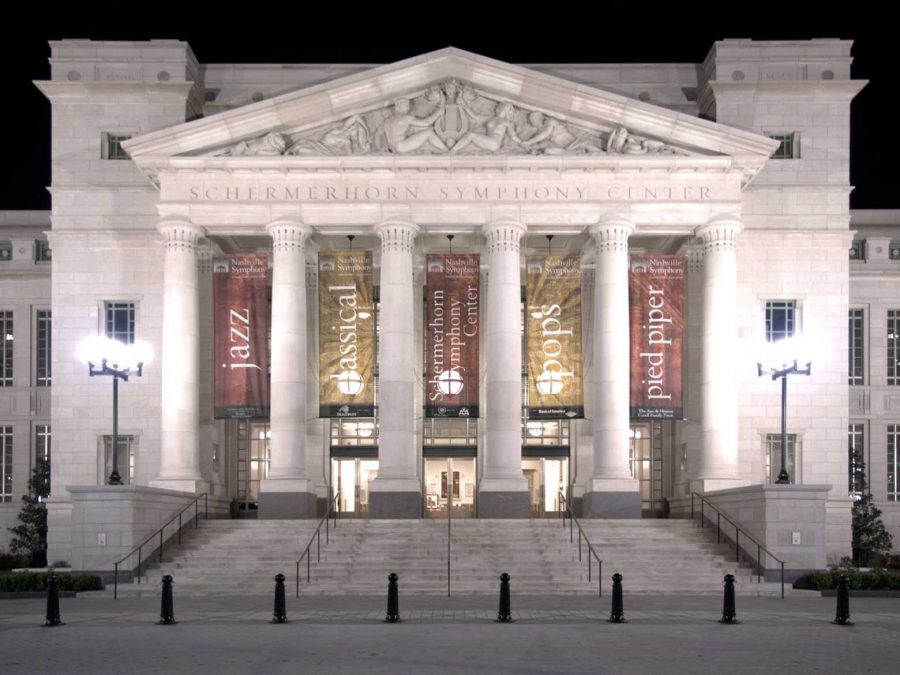If you were looking for the inside scoop on Vanderbilt’s upcoming music festival called Rites of Spring, you may be in the wrong place. However, those interested in the Nashville Symphony’s performance of Igor Stravinsky’s Rite of Spring are in luck.
On Thursday, the Grammy award-winning NSO played the first of three concerts featuring the music of Buxtehude (orchestrated by Chávez), Riley, and Stravinsky. The location is right in the heart of downtown Nashville, and groups of Blair students were in attendance as usual. Free parking is available at Cumberland Park, which is only a short and scenic walk from the venue via the pedestrian bridge.
The Schermerhorn was populated with a crowd ranging from the eager Blair students to elderly concertgoers, and the pearly lights create an atmosphere of sophistication as everyone awaited the performance.
The evening began with the broad and sweeping Chaconne in E minor by Buxtehude and orchestrated by Chávez, which contrasted with the pieces yet to come. Terry Riley’s At the Royal Majestic organ concerto, featuring soloist Todd Wilson, created an eclectic kaleidoscope of sounds and styles from blues to Baroque. The composer himself was in attendance, and the crowd acknowledged him with applause.
The main event of the night, which followed the intermission, musically illustrated an ancient springtime ritual culminating in a virgin sacrifice. The work delicately bloomed into existence with the iconic bassoon solo, beautifully played by Julia Harguindey. Uncoupled from its original ballet component, the music sufficiently depicted the scene with growing intensity and startling ferocity.
Jarringly accented rhythms in the strings heightened the sense of impending doom and mounting bloodlust. Prominent timpani parts gave a primitive, insistent drive. Repeated, fast runs of notes flawlessly executed in the woodwinds kept the audience tense and captivated until the orchestra reached the end.
When the last notes sounded, the performance was met with resounding applause, the exact opposite of the boos and outrage at the work’s Paris premiere over a century ago. Now heralded as a key modernist piece, the reception has completely flipped from the initial indignant response. Even though it may have taken some time for the public to discover the inherent power and influential nature of this raw piece, it will surely continue its current legacy for years to come.
There is undoubtedly something special about live performance that gives new context to old pieces, and the symphony is the perfect place to embrace this privilege in Nashville.



